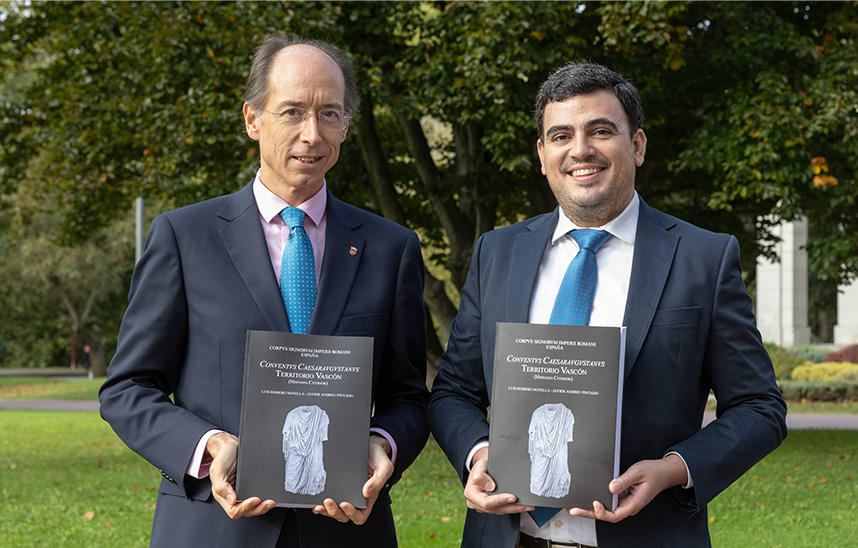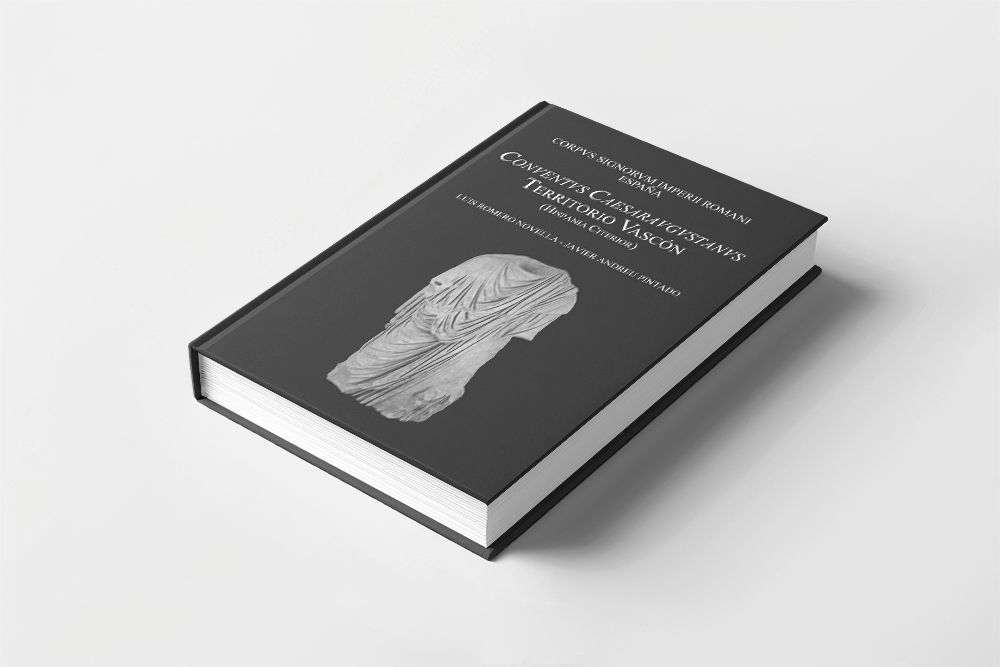A book from the University collects and analyses for the first time the Roman statuary found in Basque territory
The work incorporates 3D models of the inventoried pieces, accessible to the public through digital platforms.

The University of Navarra has published "Corpus signorum Imperii Romani. Conventus Caesaraugustanus - territorio vascón (Hispania Citerior)", a work edited by EUNSA and the Institut Català de Arqueología Clàssica, which gathers and analyzes the Roman sculptural material attested in the territory of the ancient Vascones. The book is the result of a joint work between Luis Romero, PhD in History from the University of Navarra and professor at the Complutense University of Madrid; Javier Andreu, Full Professor of Ancient History and director of Diploma in Archaeology at the University of Navarra; and Luka García de la Barrera, graduate in History and Archaeology from the University of Navarra and predoctoral fellow of the Government of Navarra.

Throughout its more than 500 pages, the authors analyze the sculptures and decorative pieces found in various localities of the Basque territory. Among them are Los Bañales de Uncastillo (Zaragoza), where 111 pieces have been inventoried (for example, one of the best imperial representations of Domitian in the Iberian Peninsula); Santa Cruz de Eslava (Navarra), with a selection of 46 pieces (among others, the northernmost representation of deified Augustus known in Hispania); or Pompelo (present-day Pamplona), whose most noteworthy piece is the bronze toga recently recovered by the Government of Navarra. As Professor Andreu explains, "the recent findings at these sites have provided evidence that until recently was considered non-existent in relation to Roman statuary, offering new perspectives on the monumentalization of the cities of the Basque area". In this sense, if something makes this work especially valuable is that "it covers a area that until now had been practically unknown and integrates it in the currents of diffusion of the iconographic programs of Rome in the peninsular interior".
On the other hand, thanks to the support of the Palarq Foundation, it has been possible to carry out an archaeometric study of the marbles used in the sculptures, which has provided new data on the materials and techniques of the period. "The incorporation of 3D models of the archaeological pieces, available online for the general public, is one of the most innovative aspects of the publication, which thus becomes the first of its series to offer digital access to three-dimensional recreations, something that facilitates both research and knowledge dissemination". The monograph is part of the results of the project "De parua a oppida labentia: ciudad, ciudadanía y development urbano en el piedemonte vasco-aquitano (siglos I a. C.-II a. C.)", financed by the Ministry of Science, Innovation and Universities, with the goal to better understand the process of urbanization and monumentalization of Roman cities in this area. It has also received financial support from the Parliament of Navarra.

The book has been presented in the framework of the XI meeting of Roman Sculpture in Hispania, organized by the University of Navarra, the Museum of Navarra, Los Bañales de Uncastillo and Santa Cruz de Eslava. quotation In the meeting, held in Pamplona, half a hundred specialists from more than 30 national and international institutions, among others, the Halle Universität (Germany), the Universidade de Lisboa (Portugal), the Università di Roma Tor Vergata (Italy), the Université de Paris IV (France), the Instituto Andaluz de Patrimonio Histórico, the Servicio de Patrimonio Histórico del Gobierno de Navarra, the Escuela Española de Historia y Arqueología del CSIC, or the Museo Nacional de Arte Romano.
The book will soon be available for purchase on the EUNSA website and in bookstores.




